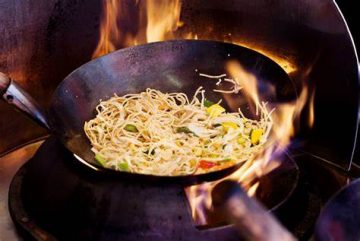
Whether it is Chinese, Spanish, or French, language is a tremendous part of AISG students’ lives. Not only is language class spent learning about the grammar and words within the language, but a major part of class is understanding the culture from which the language comes from. During Chinese New Year, students in Chinese class got the chance to learn about the culture of China and set up booths for the Chinese New Year event, as well as partake in activities such as fan drawing and making moon cakes. Spanish student Chloe I. noted that she learned about “Día de los Muertos,” meaning the Day of the Dead when it is almost time for Halloween. Students also learnt about the origins of the day and why it is so important to Mexican culture. With Spanish class on May 5, Chloe claimed that they learned about “Cinco de Mayo” and its history, including how Mexican people celebrate the day. In French class, students learned about the history of Mardi Gras and carnivals to understand more about French culture.
However, a common question that students ask language teachers is: “Why don’t we ever cook in language class?” Many could agree that food is a major part of any culture, and if language class is about learning the language and the culture from where the language comes from, then why not allow students to cook and learn about the dishes of that country? Food is an important aspect of each country’s culture. Almost all countries in the world have a national dish that can be easily found on the Internet with a quick search on Google. Countries such as France and China also treat food as a part of their culture’s tradition. Ms. Erica, a Chinese teacher at AISG, claimed that “Chinese food is an essential part of the culture as it not only is about the history tradition, but also a modern way of communication for all sorts of events or circumstances between people.” Through cooking and learning about these national dishes, students are able to discover new aspects of a country’s culture.
Although most teachers don’t offer students the chance to cook during
language class, AISG French teacher Mr. Kissi has allowed his classes to cook for one day. Nevertheless, there were specific rules that must be followed before they began. Students must search on the internet for dishes from the country but in their language (i.e. if you are in Spanish class, you must search for dishes from Spanish speaking countries in Spanish, and if you are in French class you much search for dishes from French speaking countries in French). Additionally, students have to write out the steps of the recipe in the language. This project allowed the students to improve their second language through the research and planning phase, but also allowed them to understand more about the culture regarding their second language countries.
In an interview based on whether or not second-language classes should
include cooking, junior Roy Shi stated that he is very excited, since he can “bring in the traditional food from [his] hometown in Henan to share with the rest of the class.” Chinese teacher Ms. Erica also stated that there are three reasons why cooking should be included in language classes. “Firstly, it can teach the students more about one’s culture. Secondly, it is an interesting topic for both the students and the teachers. Thirdly, this can also improve the students’ ability to cook and do certain things by hand instead of relying everything on technology.” She also stated that one culture’s food can show more than just its taste, but “the natural inhabitant as well as cultural behaviors of the regional people.”
In my opinion, I believe that adding the cooking element in language classes would bring an interesting spin to the class, and it can also teach the students beyond just the taste of the food. The teachers would also most likely be interested in teaching this new element in their classes and enjoy each culture’s special dishes. Just like Chloe had mentioned, “cooking engages students and lets them learn more about the culture.”